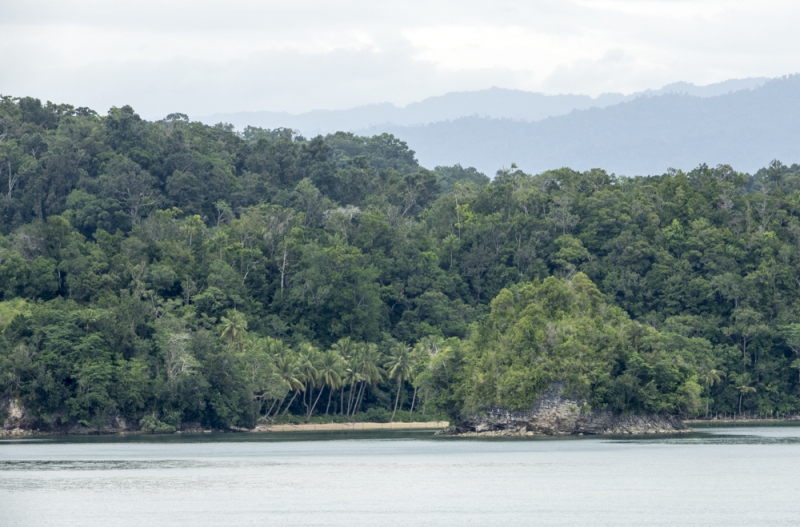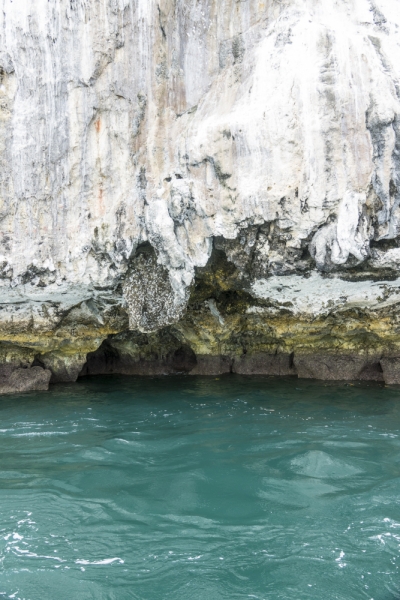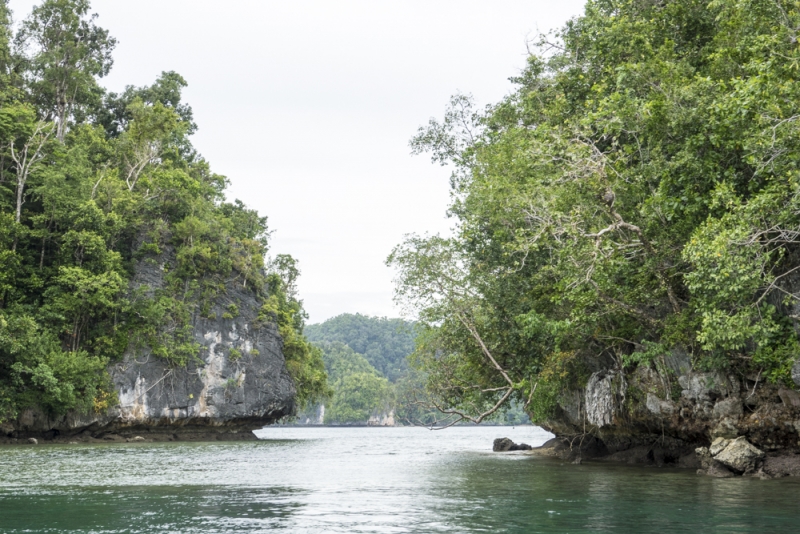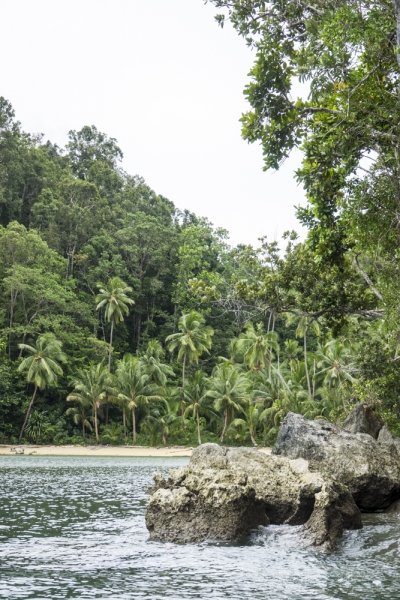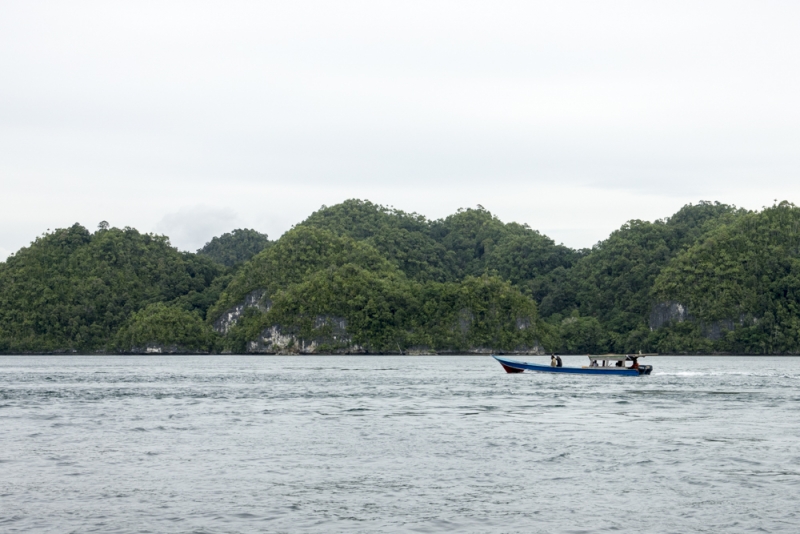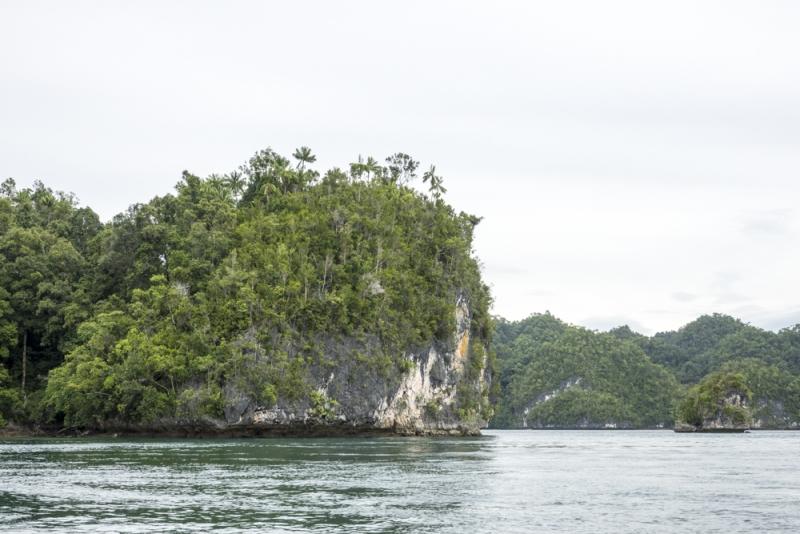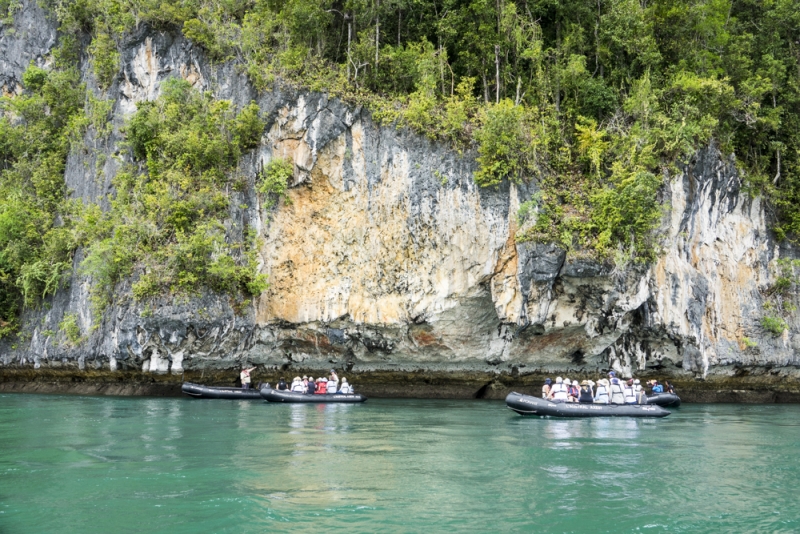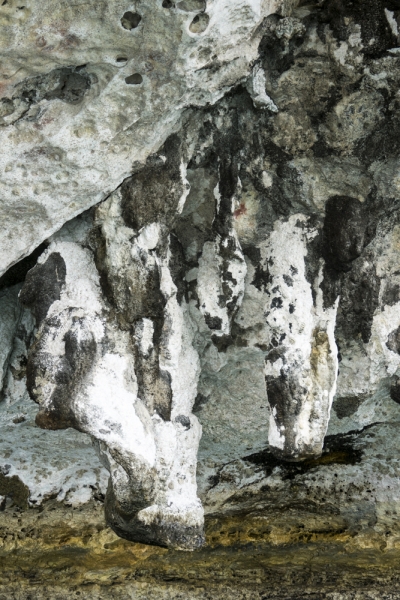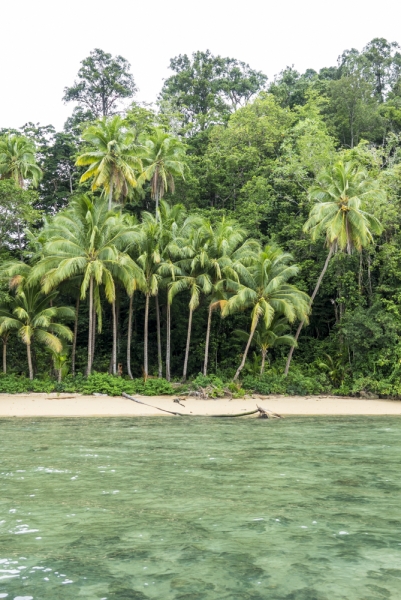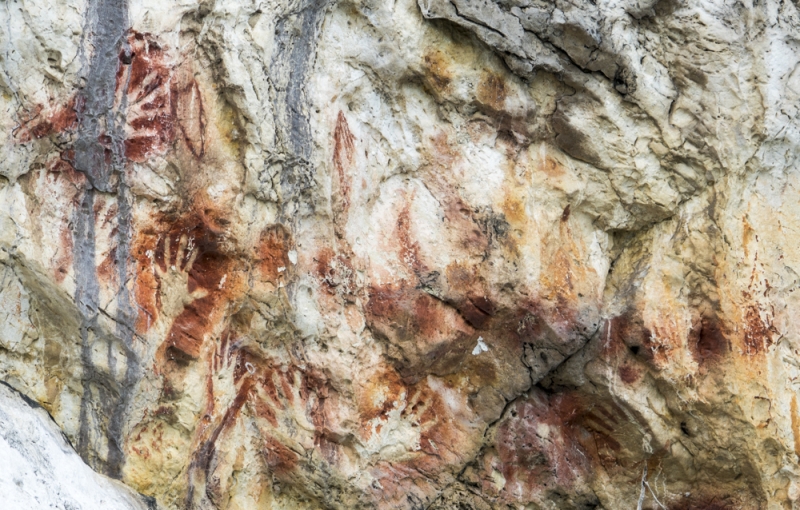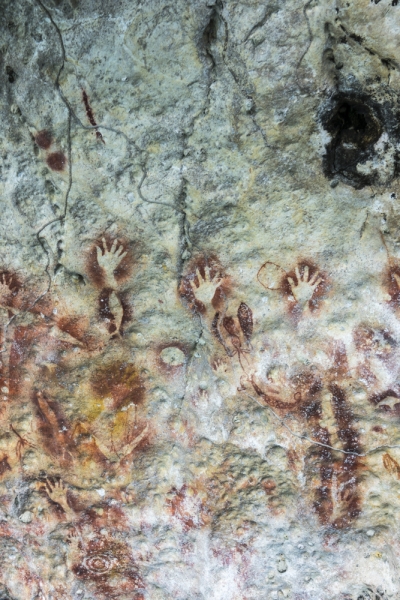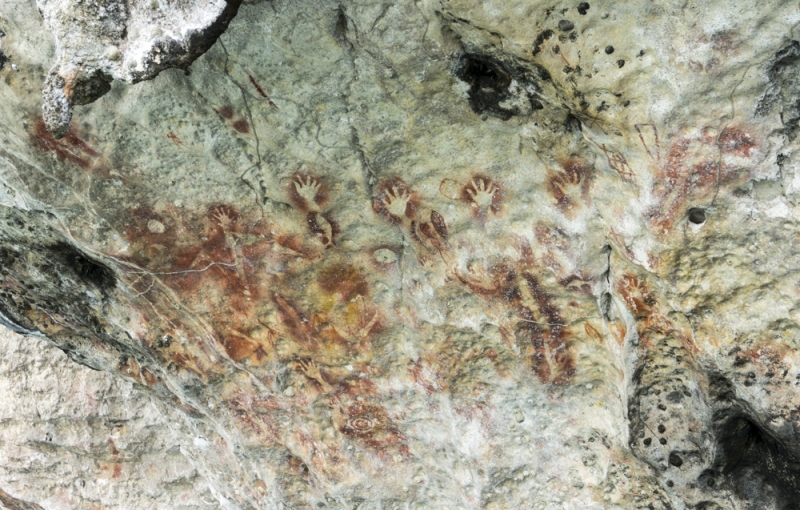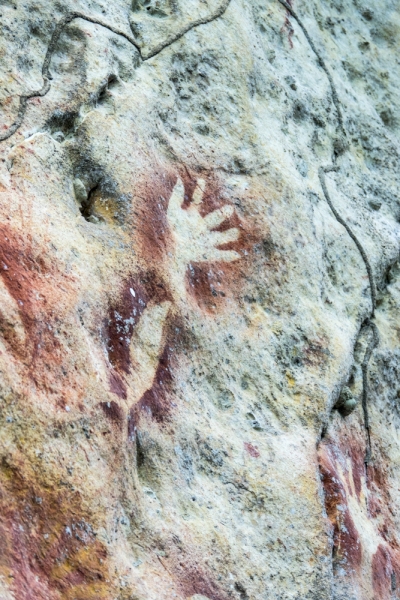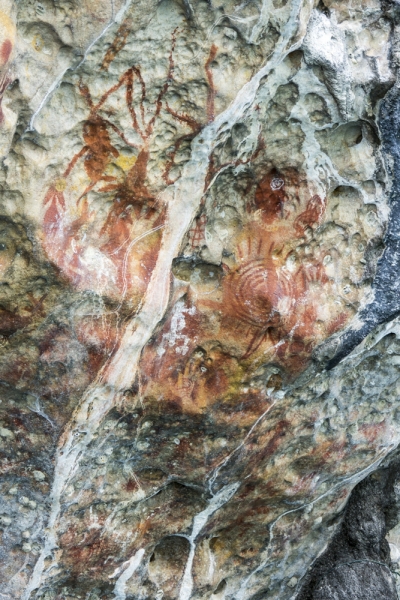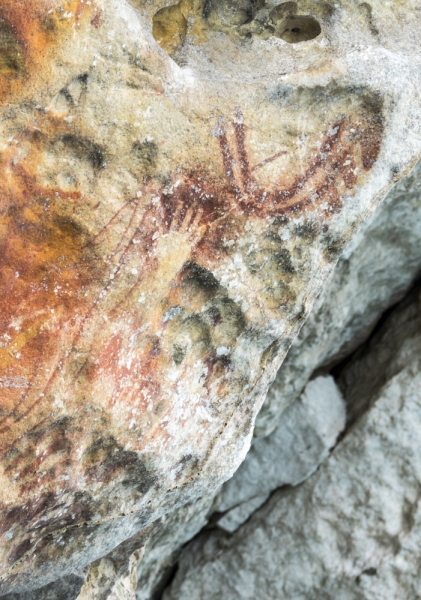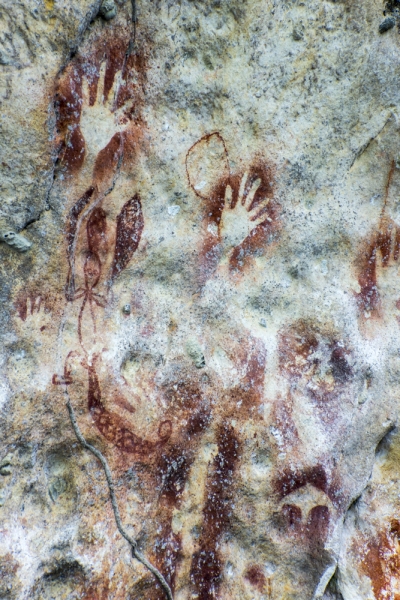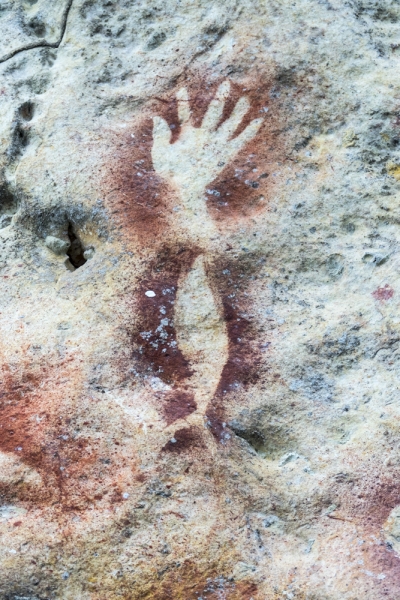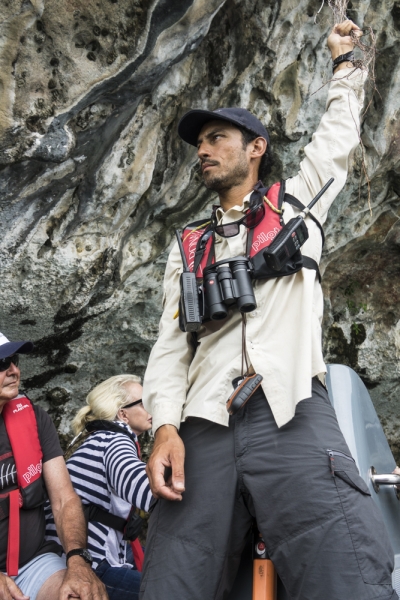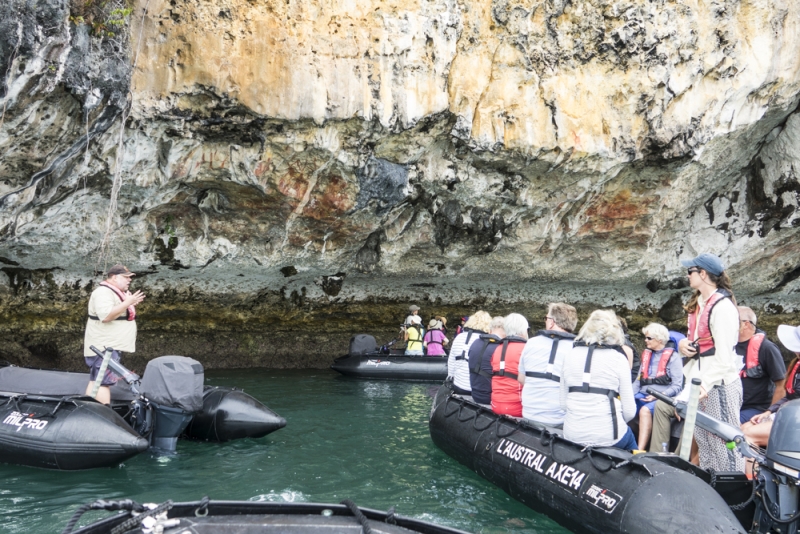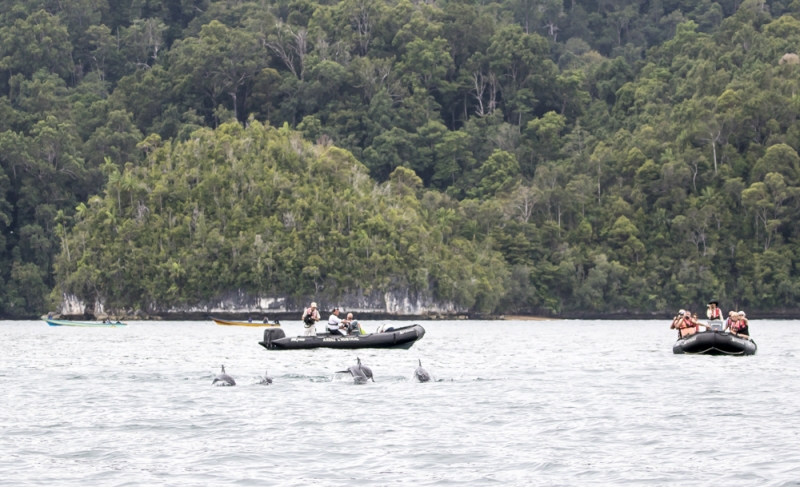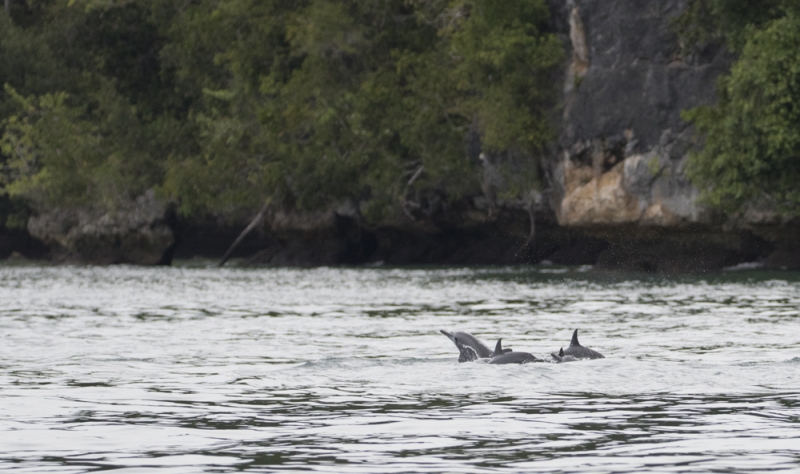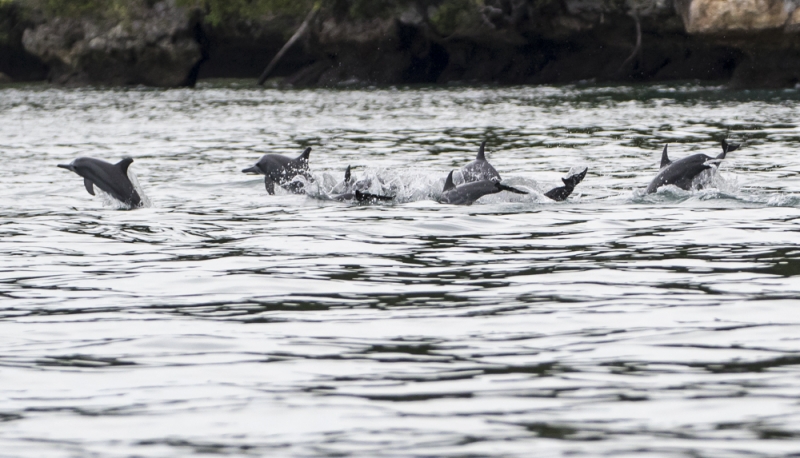L’Austral arrives in Arguni at midday as planned, with temperatures ranging from 27⁰C in the morning to 31⁰C in the afternoon. On the way in, 30 knot winds and a rain squall (best experienced on the bridge) dampen the plans to visit two major Bradshaw rock art sites in Arguni. We are still in West Papua, and near to the small village of Kokas, the administrative centre for the region.
The arrival of L’Austral has generated a flurry of local boats coming to look at the ship. One family arrives in a long boat with both parents and at least 5 small, excited children shouting hello and bye! One lone man in a boat appears to be regarding the ship with binoculars, but on closer inspection is photographing the ship with his smartphone.
The weather is overcast and grey, with choppy seas at the second rock art site. Plans are changed to be a 90 minute zodiac ride to one of the locations, which has rock art scattered around the river in various locations, and one major site on a small island.
Whilst the Kimberley art is found in coastal areas, the ones L’Austral visited in the Kimberley were away from the water, often in caves. The art in West Papua is painted on limestone river walls, and is deteriorating to the point where it is expected to disappear within 100 years. The art takes the form of handprints – hands with 5 fingers and a thumb, which is believed to be a practical joke rather than the existence of 6 fingered humans, lizards, fish and boomerangs. The resemblance to the Gwion Gwion art seen in the Kimberley is evident, and it is believed that they were created at the same time at least 15 thousand years ago.
Expedition Leader Raphael has an innovative way of keeping the zodiac steady as Justin Friend explains the artwork – holding on to a dangling bunch of tree roots.
There is more wildlife around than yesterday, with frigate birds and kites circling overhead at times, the occasional turtle, and a pod of at least 8 small dolphins similar to Hector’s or Commersons’ dolphins.

